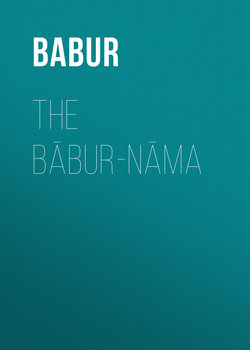Читать книгу The Bābur-nāma - Babur - Страница 18
PREFACE
Chapter III.
THE TURKI MSS. AND WORK CONNECTING WITH THEM
Part II. Work on the Hindustan MSS
XI
ОглавлениеThe period from cir. 1700, the date of the Haidarabad Codex, and 1810, when the Elphinstone Codex was purchased by its sponsor at Peshawar, appears to have been unfruitful in work on the Hindustan MSS. Causes for this may connect with historic events, e. g. Nadir Shah’s desolation of Dihli and the rise of the East India Company, and, in Baburiana, with the disappearance of Babur’s autograph Codex (it was unknown to the Scots of 1800-26), and the transfer of the Elphinstone Codex from royal possession – this, possibly however, an accident of royal travel to and from Kabul at earlier dates.
The first quarter of the nineteenth century was, on the contrary, most fruitful in valuable work, useful impulse to which was given by Dr. John Leyden who in about 1805 began to look into Turki. Like his contemporary Julius Klaproth (q. v.), he was avid of tongues and attracted by Turki and by Babur’s writings of which he had some knowledge through the ‘Abdu’r-rahim (Persian) translation. His Turki text-book would be the MS. of the Asiatic Society of Bengal,19 a part-copy of the Bukhara compilation, from which he had the India Office MS. copied. He took up Turki again in 1810, after his return from Malay and whilst awaiting orders in Calcutta for departure to Java. He sailed in the autumn of the year and died in August 1811. Much can be learned about him and his Turki occupations from letters (infra xiii) written to Erskine by him and by others of the Scottish band which now achieved such fine results for Babur’s Autobiography.
It is necessary to say something of Leyden’s part in producing the Memoirs, because Erskine, desiring to “lose nothing that might add to Leyden’s reputation”, has assigned to him an undue position of collaboration in it both by giving him premier place on its title-page and by attributing to him the beginning the translation. What one gleans of Leyden’s character makes an impression of unassumption that would forbid his acceptance of the posthumous position given to him, and, as his translation shews the tyro in Turki, there can be no ground for supposing he would wish his competence in it over-estimated. He had, as dates show, nothing to do with the actual work of the Memoirs which was finished before Erskine had seen in 1813 what Leyden had set down before he died in 1811. As the Memoirs is now a rare book, I quote from it what Erskine says (Preface, p. ix) of Leyden’s rough translation: – “This acquisition (i. e. of Leyden’s trs.) reduced me to rather an awkward dilemma. The two translations (his own and Leyden’s) differed in many important particulars; but as Dr. Leyden had the advantage of translating from the original, I resolved to adopt his translation as far as it went, changing only such expressions in it as seemed evidently to be inconsistent with the context, or with other parts of the Memoirs, or such as seemed evidently to originate in the oversights that are unavoidable in an unfinished work.20 This labour I had completed with some difficulty, when Mr. Elphinstone sent me the copy of the Memoirs of Baber in the original Tūrkī (i. e. The Elphinstone Codex) which he had procured when he went to Peshawar on his embassy to Kabul. This copy, which he had supposed to have been sent with Dr. Leyden’s manuscripts from Calcutta, he was now fortunate enough to recover (in his own library at Poona). “The discovery of this valuable manuscript reduced me, though heartily sick of the task, to the necessity of commencing my work once more.”
Erskine’s Preface (pp. x, xi) contains various other references to Leyden’s work which indicate its quality as tentative and unrevised. It is now in the British Museum Library.
19
Cf. JRAS. 1900, Nos. VI, VII, VIII.
20
Ilminski’s difficulties are foreshadowed here by the same confusion of identity between the Babur-nama proper and the Bukhara compilation (Preface, Part iii, p. li).
